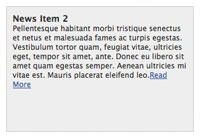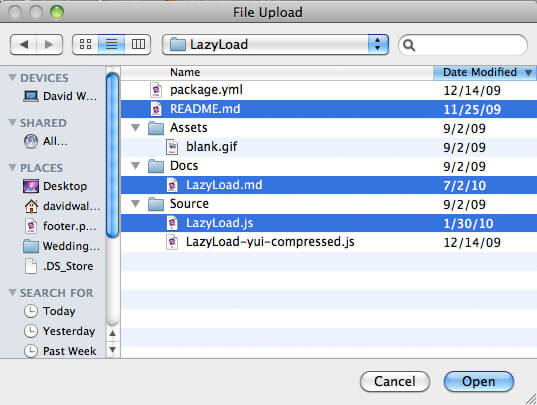Dynamic Waveform Visualizations with wavesurfer.js
Waveform images are an awesome addition to boring audio widgets. They can be functional as well as aesthetically pleasing, allowing users to navigate audio visually. I recently found wavesurfer.js, an amazing waveform image utility that uses to Web Audio API to create super customizable waveform visualizations that take only a minute to implement.
Start by including wavesurfer.js in your page:
<script src="//cdnjs.cloudflare.com/ajax/libs/wavesurfer.js/1.4.0/wavesurfer.min.js"></script>
Create an instance of WaveSurfer, passing the element's selector and other configuration options:
var wavesurfer = WaveSurfer.create({
// Use the id or class-name of the element you created, as a selector
container: '#waveform',
// The color can be either a simple CSS color or a Canvas gradient
waveColor: 'grey',
progressColor: 'hsla(200, 100%, 30%, 0.5)',
cursorColor: '#fff',
// This parameter makes the waveform look like SoundCloud's player
barWidth: 3
});
Lastly, direct wavesurfer.js to load the the audio file:
wavesurfer.load('RodStewartMaggieMay.mp3');
Adding buttons to play pause, skip, and mute/unmute is easy with wavesurfer.js as well:
<button onclick="wavesurfer.skipBackward()"> Backward </button> <button onclick="wavesurfer.playPause()"> Play | Pause </button> <button onclick="wavesurfer.skipForward()"> Forward </button> <button onclick="wavesurfer.toggleMute()"> Toggle Mute </button>
wavesurfer.js highlights each bar as the song moves on, even allowing you to skip throughout the song as you click on points in the waveform visualization!
wavesurfer.js takes only a moment to implement but with its massive configuration list you can spend as much time as you'd like making the waveform visualization fit your branding.






Thanks for this guideline but player not working in IOS (Chrome & Safari)
Thank you for the article! We are having difficulty showing multiple waveforms on the same page. Do you have any advice for us?
wave surfer doesn’t load any live link .work good with local file which not helpful any longer